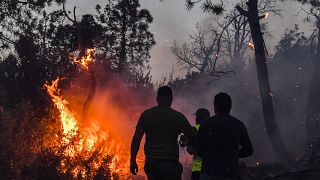Brazil
A landfill in the Guanabara Bay of Rio de Janeiro, Brazil, has been restored to mangroves, a boost for the area's flora and fauna.
The 600,000 square metres recovered was part of one of the largest landfills in Latin America.
From the early 1970s to 2012, the dump in the Jardim Gramacho neighbourhood received around 80 million tonnes of trash, polluting the land and the waters of the Guanabara Bay.
The landfill was deactivated 11 years ago and, through an environmental project led by Rio's Municipal Cleaning Company and a private company, the area has been replaced by greenery.
The project began by planting 10 hectares of mangrove plants and now has 60 hectares. It is the largest mangrove area of the bay.
Mangrove plants are the most suitable for use in environmental restoration, due to their impressive ability to store so-called "blue carbon", a term used to refer to the carbon of marine and coastal ecosystems, in contrast to the "green carbon" associated with forest and other terrestrial ecosystems.
According to estimates from a study published in early 2022, one hectare of mangrove can store between two and four times more carbon than the same hectare of another biome - including the Amazon rainforest.
The restored mangroves in Guanabara Bay are also helping in the recovery of both flora and fauna, with species of crabs, birds and fish now populating the area.













01:21
2024 Set To Be Hottest Year On Record
02:02
Developing nations blast COP29 climate finance deal
01:33
Activists from global south protest at COP29 calling for finance for less privileged countries
01:48
Mali's former environment minister launches plan to protect forests
01:00
COP29 carbon credit debate sparks backlash from activists
01:14
Afghanistan’s delegation attends COP29, seeks international backing for climate action